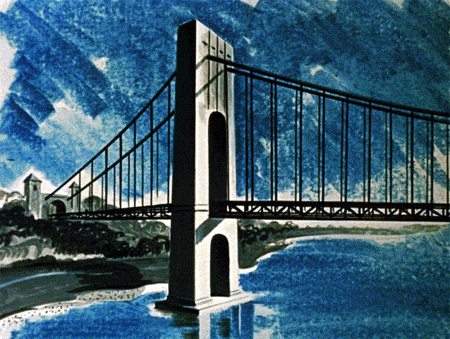Line

Line |
|||||
| Lines are usually thought of as paths or marks left by moving points. People often describe them with words that suggest qualities of motion: active or passive, calm or jerky, flowing or still. | |||||
 |
|||||
| Artists remember these qualities when they create art. They plan their use of straight or curved marks, thick or thin marks. They know that qualities of marks such as dark or light, continuous or broken, can communicate ideas and feelings. | Artists see and think about their traces in other ways. They can be contours or edges of shapes and forms. The contours may be geometric - precise and regular. They may be organic and irregular - like forms seen in nature. In two-dimensional (2-D) art, an artist's traces can create the illusion of shadows, textures or forms-in space. | Implied, they can suggest motion or organize an artwork. Thus, they are not actually seen, but they can seem to be present in the way edges of shapes are aligned. In architecture, sculpture and other three-dimensional (3-D) forms, they can actually twist, turn and move up or down in space. | People enjoy qualities of marks in the art of caligraphy - beautiful handwriting. Most people also enjoy caricatures. In a caricature, an artist may use just a few gestura marks to capture the personality of a person or situation. | ||
Line fill-in sheet